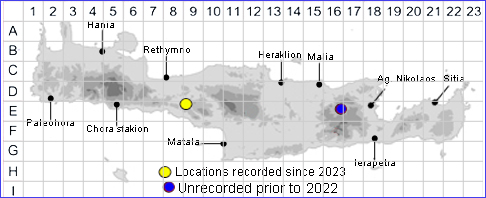
SPECIES DESCRIPTION
PHACELIA TANACETIFOLIA
Family and Genus:- See- HYDROPHYLLACEAE
Common Names:- Lacy phacelia, blue tansy or purple tansy.
Homotypic Synonyms:- Phacelia tanacetifolia var. cinerea, Phacelia
tanacetifolia var. pseudo-distans.
Meaning:- Phacelia (Gr) Bundle, (the clustered flowers).
Tanacetifolia (L) With leaves those of Tanacetum.
General description:- Annual.
Stems:-
1) 20-80 cm, glandular-pubescent and hispid, usually erect and simple or sparingly
branched.
Leaves:-
1) 2-10 cm, shortly petiolate, ovate to ovate-oblong in outline, 1- to 2-pinnatisect.
Flowers:-
1) Inflorescence, dense, generally 2-4-branched.
2) Calyx lobes, 4-7 mm, 6-8 mm in fruit, ± linear, densely long-hairy.
3) Corolla, ± persistent in fruit, 6-9 mm, widely campanulate, blue.
4) Corolla scales, fused to the filament bases, linear.
5) Stamens, 9-15 mm, long-exserted, glabrous.
6) Filaments, purple.
7) Style, 8-15 mm, connate for c. 1 mm, cleft 2/3-3/4, glabrous.
Fruit:-
1) Capsule, 3-4 mm, ovoid, glabrous proximally, puberulent to short-hairy distally.
2) Seeds, 1-2(4), 2--3 mm, wrinkled, pitted.
Habitat:- Sandy to gravelly slopes, open areas. Elevation: 0-2500 m.
Distribution:- Native to North America. But is now widely cultivated in agriculture
as a cover crop and occasionally as an ornamental on road embankments.
Previously unrecorded from Crete. Discovered by Christopher Cheiladakis on the
Lasithi Plateau in 2022, with a further two locations found by Enda McMullen in
2023 in the Spili area.
Used outside its native range in agriculture as a cover crop, a bee plant, an
attractant for other beneficial insects, as a green manure and an ornamental plant.
It is planted in vineyards and alongside crop fields, where it is valued for its long,
coiling inflorescences of nectar-rich flowers which open in sequence, giving a long
flowering period. It is a good insectary plant, attracting pollinators such as
bumblebees and honey bees.
Flowering time:- Mar--May
Photos by:- Christopher Cheiladakis and Enda McMullen
